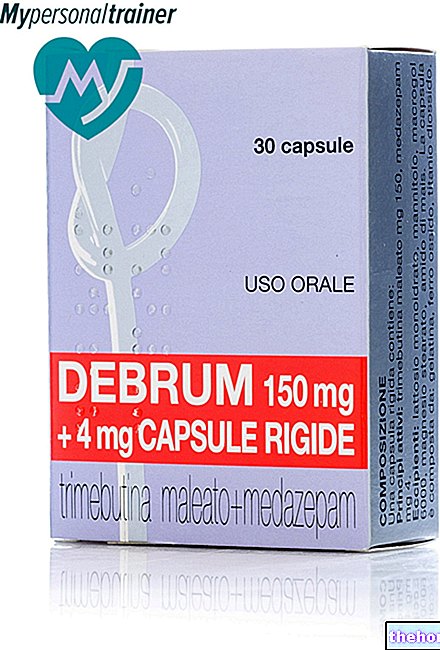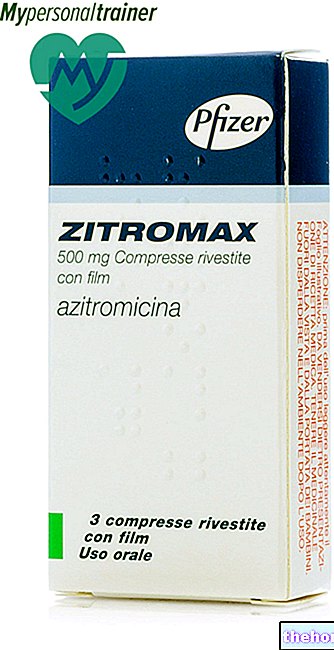Active ingredients: Lactulose
LAEVOLAC granules ® 10 g sachets
Laevolac package inserts are available for packs:- LAEVOLAC granules ® 10 g sachets
- LAEVOLAC® 66.7 g / 100 ml syrup
Indications Why is Laevolac used? What is it for?
Pharmacotherapeutic group
Regulator of intestinal function.
Indications
Adults
Chronic constipation. Adjuvant in intestinal bacterial diseases.
Children and infants
Constipation. Treatment of putrefactive syndromes due to eating disorders.
Contraindications When Laevolac should not be used
Hypersensitivity to one of the components of the product. Galactosemia.
Precautions for use What you need to know before taking Laevolac
Although the active ingredient of Laevolac is a poorly absorbable and non-metabolized sugar, due to the presence of other sugars such as lactose, galactose and tagatose, in diabetic patients it is necessary to inform the doctor.
Continued use of laxatives can cause addiction or damage of various kinds. If constipation is persistent, consult your doctor.
Interactions Which drugs or foods can modify the effect of Laevolac
Patients on digitalis therapy should consult their doctor before starting treatment. A synergistic effect with neomycin is possible.
Broad spectrum antibacterial agents and antacids, administered orally at the same time as lactulose, may limit its therapeutic efficacy.
Warnings It is important to know that:
Do not use the drug if abdominal pain, nausea and vomiting are present.
Keep out of reach of children.
After a short period of treatment, if no appreciable results are obtained, consult your doctor.
Dose, Method and Time of Administration How to use Laevolac: Posology
Adults
1 - 2 sachets / day.
Children
1⁄2 - 1 sachet / day.
The total amount can be taken in a single dose, preferably in the morning on an empty stomach or in the evening before a meal.
The product can be diluted in water, milk or other drinks.
In children, do not exceed 7 days of therapy without consulting a doctor.
Do not exceed the recommended dose.
Overdose What to do if you have taken too much Laevolac
Symptoms: diarrhea, abdominal cramps.
Treatment: discontinuation of the drug.
Side Effects What are the side effects of Laevolac
In rare cases, Laevolac can cause gas production (bloating and flatulence) and abdominal cramps.
These symptoms are generally mild and disappear spontaneously after the first days of treatment. Only in the event of diarrhea should the therapy be discontinued.
Any undesirable effects not described should be reported to the doctor or pharmacist.
Expiry and Retention
Warning: do not use the medicine after the expiry date indicated on the package.
Composition and pharmaceutical form
Composition
10 g sachets
1 sachet contains: lactulose 10 g. Excipients: lemon flavor.
Packs
10 sachets of 10 g
Source Package Leaflet: AIFA (Italian Medicines Agency). Content published in January 2016. The information present may not be up-to-date.
To have access to the most up-to-date version, it is advisable to access the AIFA (Italian Medicines Agency) website. Disclaimer and useful information.
01.0 NAME OF THE MEDICINAL PRODUCT
LAEVOLAC
02.0 QUALITATIVE AND QUANTITATIVE COMPOSITION
100 ml of syrup contain:
lactulose 66.7 g.
1 sachet of 10 g contains:
10 g lactulose.
03.0 PHARMACEUTICAL FORM
Syrup and Granules.
04.0 CLINICAL INFORMATION
04.1 Therapeutic indications
Adults
Short-term treatment of occasional constipation.
Children and Infants
Short-term treatment of occasional constipation.
04.2 Posology and method of administration
The correct dose is the minimum sufficient to produce easy evacuation of soft stools.
It is advisable to initially use the minimum doses provided.
When necessary, the dose can then be increased, but without ever exceeding the maximum indicated.
Take preferably in the evening.
Adults
Syrup initial dose maintenance dose
mild constipation 1 tablespoon / day 2 coffee spoons / day
severe constipation 1-2 tablespoons / day 2-3 coffee spoons / day
stubborn constipation 2-3 tablespoons / day 2-4 coffee spoons / day
Sachets
1-2 sachets / day.
Children
Syrup initial dose maintenance dose
1-6 years 1-2 teaspoons / day 1 teaspoon / day
6-14 years 1 tablespoon / day 2 coffee spoons / day
Sachets
½-1 sachet / day.
Infants starting dose maintenance dose
Syrup 1 teaspoon / day 1 teaspoon / day
1 tablespoon = 15ml = 10g of lactulose
1 teaspoon = 5ml = 3.3g of lactulose
Laxatives should be used as infrequently as possible and for no more than seven days. The use for longer periods of time requires a doctor's prescription after adequate evaluation of the individual case.
04.3 Contraindications
Hypersensitivity to the active substance or to any of the excipients.
Laxatives are contraindicated in subjects with acute abdominal pain or of unknown origin, nausea or vomiting, intestinal obstruction or stenosis, rectal bleeding of unknown origin, severe dehydration. Contraindicated in subjects with galactosemia.
Generally contraindicated during pregnancy and lactation (see section 4.6).
04.4 Special warnings and appropriate precautions for use
Warnings
The abuse of laxatives (frequent or prolonged use or with excessive doses) can cause persistent diarrhea with consequent loss of water, mineral salts (especially potassium) and other essential nutritional factors.
In severe cases, the onset of dehydration or hypokalaemia is possible, which can cause cardiac or neuromuscular dysfunction, especially in the case of simultaneous treatment with cardiac glycosides, diuretics or corticosteroids.
The abuse of laxatives, especially contact laxatives (stimulant laxatives), can cause addiction (and, therefore, the possible need to gradually increase the dosage), chronic constipation and loss of normal intestinal functions (intestinal atony). Laevolac a non-absorbable sugar, at the recommended doses is not contraindicated in diabetic patients.
However, due to the presence of other sugars such as lactose, galactose and tagatose, in case of prolonged treatment, for such patients it is advisable to consult a doctor.
Keep out of reach of children.
Precautions for use
In children under 12 years of age, the medicine can only be used after consulting your doctor.
The treatment of chronic or recurrent constipation always requires the intervention of the physician for the diagnosis, the prescription of the drugs and the surveillance during the therapy.
Consult your doctor when the need for the laxative derives from a sudden change in previous bowel habits (frequency and characteristics of bowel movements) lasting more than two weeks or when the use of the laxative fails to produce effects.
It is also advisable for elderly people or those in poor health to consult their doctor before using the medicine.
04.5 Interactions with other medicinal products and other forms of interaction
Laxatives can reduce the time spent in the intestine, and therefore the absorption, of other drugs administered simultaneously orally.
Avoid ingesting laxatives and other drugs at the same time: after taking a medicine leave an interval of at least 2 hours before taking the laxative.
Laevolac can lead to increased toxicity of digitalis due to potassium depletion.
Furthermore, a synergistic effect with neomycin is possible.
Broad spectrum antibacterial agents, administered orally at the same time as lactulose, can reduce its degradation by limiting the possibility of acidification of the intestinal contents and, consequently, the therapeutic efficacy.
04.6 Pregnancy and lactation
There are no adequate and well-controlled studies on the use of the drug in pregnancy or lactation. Therefore, the medicine should only be used in case of need, under the direct supervision of the doctor, after evaluating the expected benefit to the mother in relation to the possible risk to the fetus or infant.
04.7 Effects on ability to drive and use machines
Nobody.
04.8 Undesirable effects
Occasionally: isolated cramping pains or abdominal colic, more frequent in cases of severe constipation.
Occasionally: flatulence.
These symptoms are generally mild and disappear spontaneously after the first days of treatment. Only in the event of diarrhea should the therapy be discontinued.
In exceptional cases, after long treatment, the possibility of a loss of electrolytes may arise.
04.9 Overdose
Excessive doses can cause abdominal pain and diarrhea; consequent losses of fluids and electrolytes must be replaced. Treatment: discontinuation of the drug.
See also the information in the section "Special warnings and precautions for use" regarding the abuse of laxatives.
05.0 PHARMACOLOGICAL PROPERTIES
05.1 Pharmacodynamic properties
Laevolac is a lactulose-based specialty.
Lactulose is a poorly absorbable synthetic disaccharide that reaches unchanged the last part of the intestine (colon) where it is degraded by the intestinal flora.
The intestinal environment becomes acidic and favors the growth of Lactobacilli to the detriment of potentially pathogenic putrefactive "coliform" bacteria.
The biochemical effects of lactulose help to increase intestinal motility and the consequent formation of soft and bulky stools with a tendency to normalize excretory functions.
Laevolac is therefore useful in chronic constipation and as a corrective to the infant's diet, in which it induces an intestinal bacterial flora similar to that of the baby fed at the breast.
05.2 Pharmacokinetic properties
Lactulose is not hydrolyzed in the mucosa of the small intestine of humans and animals. Studies have shown that the disaccharide is not metabolized in humans and is absorbed and eliminated in the urine only in insignificant quantities.
05.3 Preclinical safety data
Acute toxicity(DL50)
LD50 not determinable in the animal species indicated below up to the indicated doses (oral administration):
mouse 16.5 g / kg
rat 16.5 g / kg
guinea pig 13.2 g / kg
rabbit 5.28 g / kg
Toxicity for prolonged administration
oral Wistar rat, 85 days, no toxicity up to 6.6 g / kg / day
Beagle dog per os, 180 days without toxicity up to 1.32 g / kg / day
Teratogenesis
rat SD absent up to 3 g / kg per os
New Zealand rabbit absent up to 3 g / kg per os
06.0 PHARMACEUTICAL INFORMATION
06.1 Excipients
Syrup: sorbic acid (E 200) g 0.08; purified water q.s. at 100 ml.
Sachets: lemon flavor 0.05 g.
06.2 Incompatibility
None.
06.3 Period of validity
Syrup: 3 years.
Sachets: 3 years.
06.4 Special precautions for storage
None.
06.5 Nature of the immediate packaging and contents of the package
The syrup is divided into 180 ml yellow-brown bottles and subsequently introduced, together with the package leaflet, in lithographed cardboard boxes.
The product is packaged in sachets made of triple coupled paper / aluminum / polythene material.
The sachets are introduced together with the package leaflet in lithographed cardboard boxes.
Box of 10 sachets of 10 g
06.6 Instructions for use and handling
None
07.0 MARKETING AUTHORIZATION HOLDER
Roche S.p.A.
Piazza Durante, 11 20131 Milan
08.0 MARKETING AUTHORIZATION NUMBER
10 sachets 10 g cod. n. 029565025
syrup 180 ml cod. n. 029565013
09.0 DATE OF FIRST AUTHORIZATION OR RENEWAL OF THE AUTHORIZATION
Renewal: November 15, 2009
10.0 DATE OF REVISION OF THE TEXT
November 2009




























